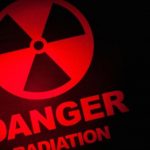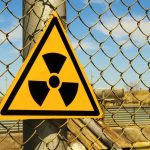
Robots keep “dying” from radiation in Fukushima, making the nuclear fallout investigation impossible
Thursday, March 09, 2017 by Tracey Watson
http://www.nuclear.news/2017-03-09-robots-keep-on-dying-from-radiation-in-fukushima-making-the-nuclear-fallout-investigation-impossible.html

On 11 March 2011, Japan was hit by a magnitude 9.0 earthquake, followed shortly thereafter by a huge tsunami, leaving 16,000 people dead and 160,000 homeless. The Fukushima Daiichi power plant, one of the 15 largest in the world, sustained serious damage in the disaster, resulting in the meltdown of three nuclear reactors. The Tokyo Electric Power Co. (TEPCO) – the company that operated the plant before the disaster – has spent the last six years trying to contain the mess and figuring out how to clean it up.
In spite of all their efforts to contain the radiation and prevent it from contaminating the groundwater, TEPCO has made very little progress. It is estimated that the decommissioning of the plant will take 40 years and cost many billions of dollars. Part of the problem is the fact that radiation levels are so high that humans would die if they got close, but it is vital to try to find out what damage has been sustained. Robotic engineer, Hiroshi Endo, told the LA Times that what happens inside a nuclear reactor after a meltdown is unknown, and the environment is less predictable than space. TEPCO’s solution has been to send more than 100 robots in to try to assess the damage, but this plan has proven less than satisfactory, because the radiation is proving to be too much for the robots, and they, too, keep “dying.” (RELATED: Find out how radiation from Fukushima has tainted U.S. milk supplies.)
Last month, TEPCO sent a robot built by Toshiba Corp into the No. 2 reactor core to try to find the 600 tons of debris and nuclear fuel trapped by the disaster. It “died” in less than a day without getting to the grate that would have given the company a view of the area where they suspect the residue is located.
Robots sent in on two previous occasions met with similar fates; one got itself stuck in a gap, and the other was abandoned after finding no fuel despite six days of searching.
Naohiro Masuda, the head of decommissioning for TEPCO, has acknowledged that they will have to start thinking “out of the box” if they are ever going to be able to examine the bottom of the core and determine where the melted debris is located.
And that out of the box thinking needs to happen quickly if they are to meet their schedule of beginning the actual clean-up work in 2021.
Radiation levels remain incredibly high at the plant. Last month, TEPCO used a remote-controlled camera and a special measurement device to take readings of the radiation levels near the core of reactor 2. While levels at the core were 73 sieverts per hour immediately after the disaster, they have now reached as high as 530 sieverts per hour. Humans exposed to this level of exposure would die almost immediately, while a robot could survive no longer than two hours. Scientists are unsure whether the radiation levels have risen considerably, or if they are only now being measured accurately for the first time. They also worry that since readings can still only be taken at a distance, the true radiation levels could be far higher. Either way, the findings cast further doubt on TEPCO’s ambitious plan to start cleaning the site up in only four years.
In the meantime, the radiation in the area has had a devastating effect on the region’s agriculture, and thousands of people remain displaced from their homes. It can only be hoped that TEPCO will come up with a better solution to determining the extent of the damage than dying robots, and they need to do so soon.
Sources for this article include:
Tagged Under: Tags: Clean Up, Daiichi Power Plant, Fukushima, radiation, robots





